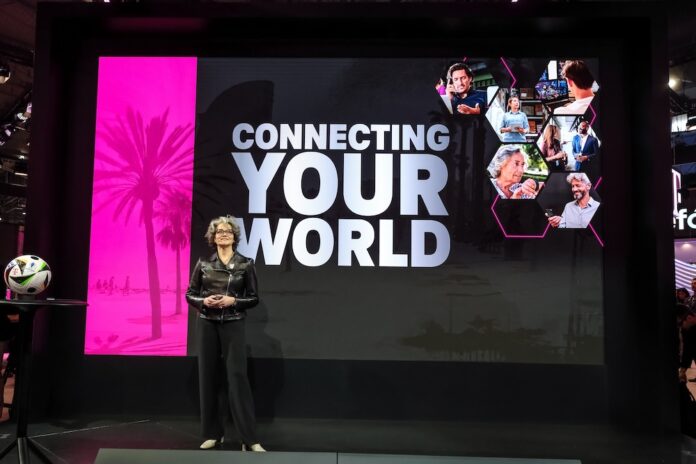The two companies demo live video solution based on CAMARA network APIs
Deutsche Telekom and Sony said they had successfully tested Nevion’s VideoIPath media orchestration platform with 5G network Application Programming Interfaces (APIs). The solution from Sony and its subsidiary Nevion uses Deutsche Telekom’s network APIs to make optimum use of the 5G network and offer low latency and reliable bandwidth, which is essential for live, professional video production.
The tests successfully combined Nevion’s smart bandwidth management capabilities and Sony’s ultra-low latency video compression technology with seamless access to Deutsche Telekom’s 5G SA network and optimised via network APIs. The tests were carried out on a 5G standalone (SA) testbed in a Deutsche Telekom lab environment in Krakow, Poland.
As part of this test, Sony used its recently-launched CBK-RPU7 HEVC 4K/HD remote production unit for the video compression, and its new 5G Portable Data Transmitter PDT-FP1 – both attached to a camera. These devices complement the solution by enabling cameras in the field to connect to the broadcast production centre over the 5G network. The network APIs used in the tests follow the standards set by CAMARA, the open-source network API project within the Linux Foundation, of which Deutsche Telekom is an active member.
Agility and savings
5G technology is of high interest to broadcasters, because of the logistical agility and potential savings it provides in live production. However, despite the high performance of 5G networks, challenges remain when using the technology for high-end live production. These broadcasts require huge volumes of video data to be transported in real-time and without fail. To ensure an enhanced live TV production with 5G, the feed that is live on air needs to be transferred with optimised latency and bandwidth.
“Live TV with multiple cameras means high technical requirements. 5G Standalone simplifies this kind of complex media production: Standardised, programmable interfaces ensure low latency times and stable bandwidths,” said DT board member for technology and innovation Claudia Nemat (above).
“In combination with 5G modems and innovative data compression, the quality of service can be adapted to optimise particularly important video signals. This makes broadcasting operations more efficient. Together with our partner Sony, we have successfully tested this 5G innovation,” she added.
Broadcast appetite for 5G
Telekom and Sony teamed up last September to test new 5G-based workflows for mission-critical live media production. This included jointly conducting trials to apply Deutsche Telekom’s dynamic network slicing technology to latest generation contribution and production workflows in the professional media space. At the time, the operator also announced the commercial launch of 5G live video production via network slicing, together with RTL.
In addition to APIs, the broadcast sector has taken to network slicing despite the clamour of it being a technology solution looking for a problem in other sectors. In addition to a number of already deployed use cases for key events world wide, last year, European broadcasters from France (France Télévisions), Italy (RAI), Germany (SWR, BR), the Netherlands (NPO), Ireland (RTÉ) and Austria (ORF/ORS) formed an alliance to develop business models and broadcast applications around 5G broadcast.
The aim of the group is to deploy commercial use cases during the 2024 Summer Olympics in Paris and the UEFA European Football Championship in Germany. These will be used to accurately assess the feasibility of adopting and rolling out 5G.
Telekom said that through dynamic slicing, 5G network resources can be allocated based on the required number of 5G connected devices, a powerful option where professional camera feeds need to be prioritised. This, combined with Sony’s camera, IoT and orchestration tools opens the way for media companies, such as a news organisation, to secure a guaranteed part of the available 5G network for their own purposes at pre-planned events.
The application of Sony’s new Ultra Low Latency HEVC codec technology also allows HD or Ultra HD images from the camera to be transferred via the slice in a highly compressed, but very high quality and ultra-low latency way.


